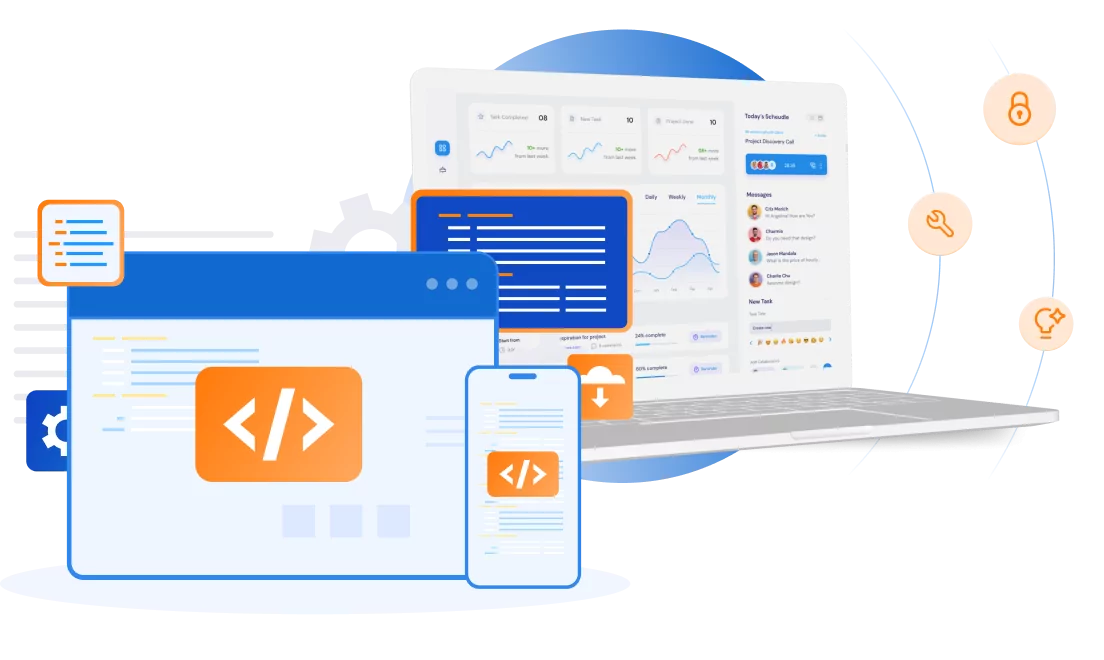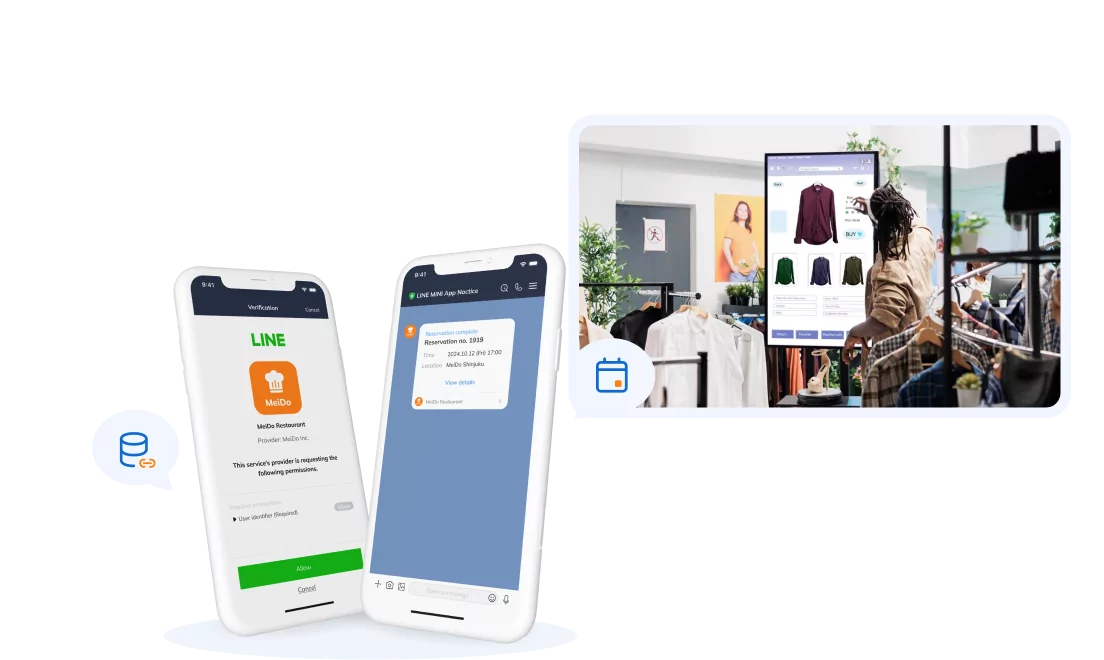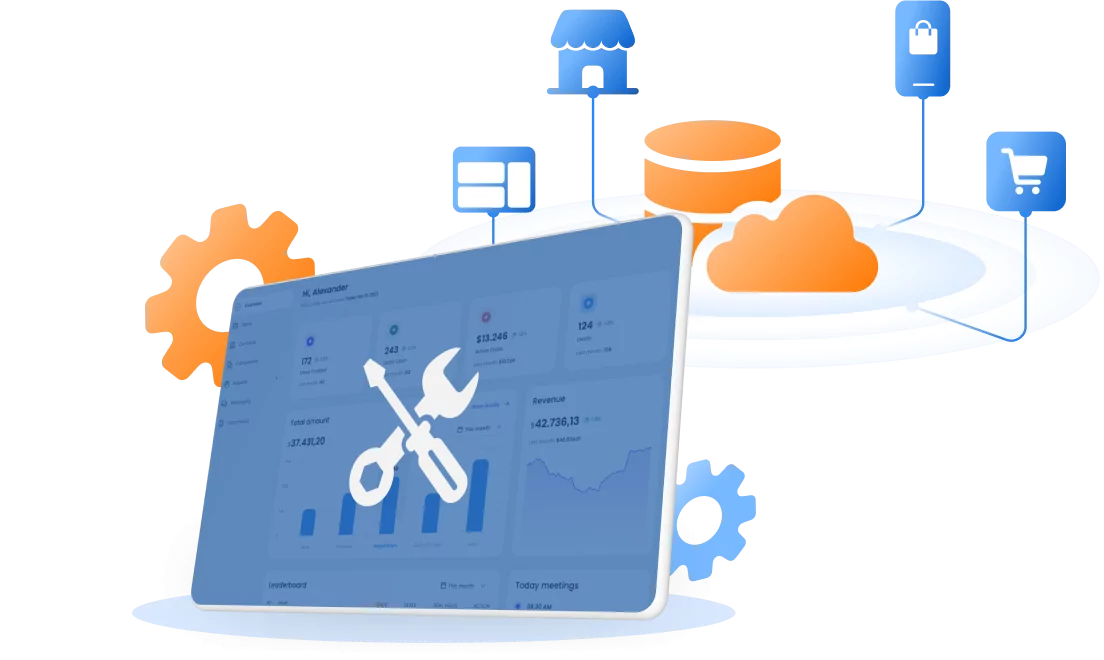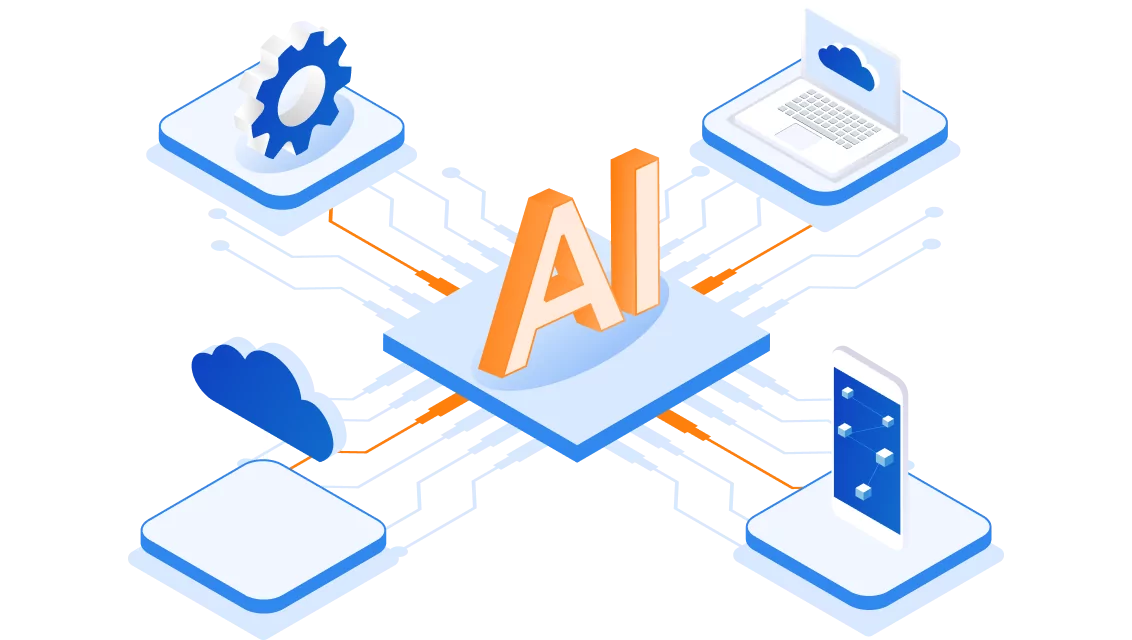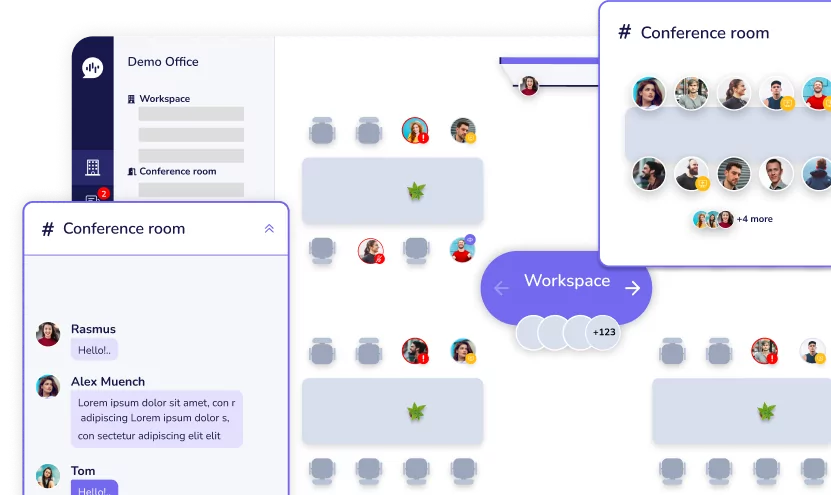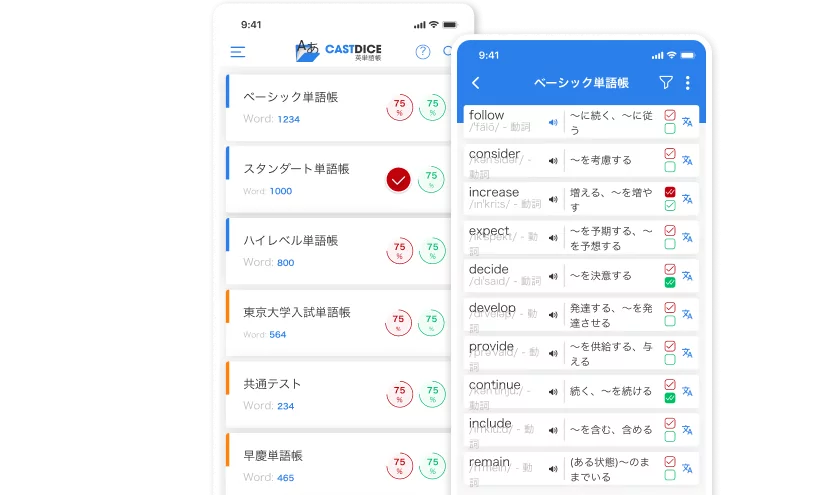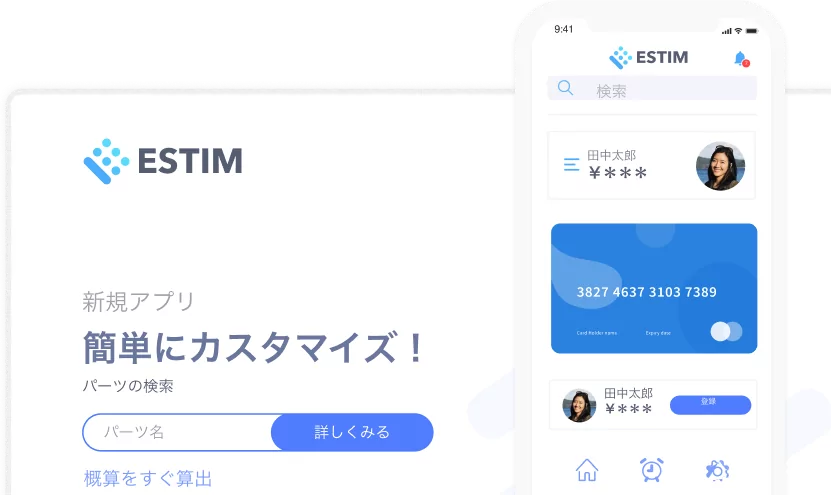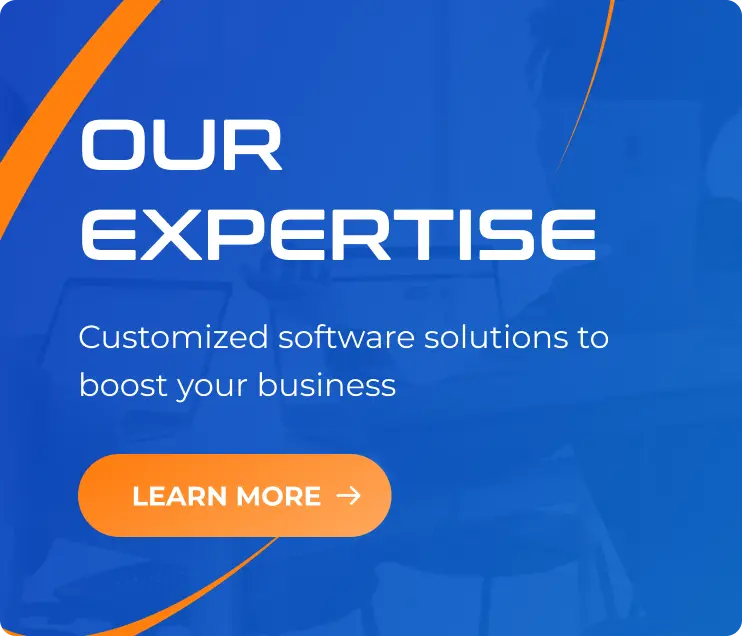Restaurant Mobile Ordering App: Transform or Lag behind the Competition
05/08/2025
1.02k
Running a restaurant has never been more demanding. Customers expect fast service, smooth experiences, and a personal touch every time. Meanwhile, F&B businesses can be struggling with staff shortages and tight margins.
This leads to a critical question for every F&B leader: How can we not only meet these challenges but turn them into a competitive advantage? For a growing number of industry leaders, the answer lies in a powerful, direct-to-consumer channel: a restaurant mobile ordering app.
Why a Restaurant Mobile Ordering App is No Longer Optional
The shift to digital is not a trend; it is a permanent change in consumer behavior, rising dramatically over the past few years. Your customers live on their smartphones, and they increasingly expect to interact with your brand through them.
Restaurant Mobile Apps in the U.S
According to a 2024 report from World Metrics, convenience is a top driver for restaurant choice, with over 60% of consumers ordering takeout or delivery at least once per week. Technology has improved the efficiency of 95% of restaurant operators. Furthermore, US online food delivery will generate $429.90 billion in 2025 and $563.40 billion by 2029.
While third-party aggregators like Uber Eats and DoorDash have capitalized on this trend, they come at a cost: steep commission fees and, more importantly, a barrier between you and your customer data.
Restaurant mobile ordering apps exploded during COVID: by mid-2020, carryout spending through restaurant-branded apps had doubled from pre-pandemic levels, and delivery via third-party apps had more than tripled. This shift hasn’t fully reversed – mobile ordering remains far higher than before the pandemic. Likewise, NPD Group reports U.S. restaurant digital orders grew +124% year‑over‑year by early 2021. In fact, restaurant-owned apps and websites now account for roughly 62% of all digital restaurant orders.
Restaurant Mobile Apps in Asia
Across Asia, the demand for restaurant mobile apps is growing fast. In 2024, Food & Drink app downloads nearly hit 2 billion which is a strong 11% year-over-year growth. This upward momentum continued into Q1 2025 (+1.5%), indicating sustained consumer interest. The APAC region led this surge, with countries like India seeing a massive 143% increase in downloads, driven by rapid digital adoption, affordable smartphones, and aggressive marketing by food tech players.
Southeast Asia also saw solid growth +18% in Food & Drink app downloads, proving that mobile-first behavior is now the norm. With smartphone usage in Asia expected to hit over 90% by 2030, the window of opportunity for restaurants to go mobile is wide open.
What Makes a Restaurant Mobile Ordering App Truly Transformational?
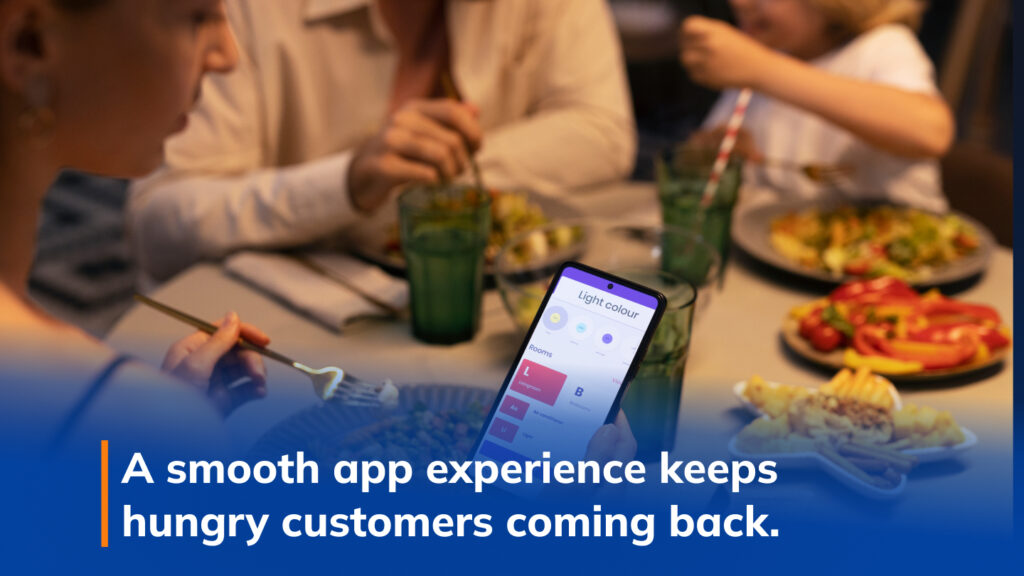
A truly strategic app includes features that generic, off-the-shelf solutions can’t offer:
- Personalization Engine: Goes beyond using a customer’s first name. It leverages AI and machine learning to analyze past behavior and suggest new menu items, predict their next order, and deliver truly individualized offers that increase basket size.
- Advanced Campaign Automation: Integrates with your marketing tools to create automated customer journeys. For instance, automatically sending a feedback survey after a first order, a loyalty bonus after the fifth, and a re-engagement campaign for dormant users.
- Deep Data Analytics & BI Integration: Pipes app data directly into your Business Intelligence (BI) tools. This allows your leadership team to visualize trends, compare app performance across locations, and make high-level strategic decisions based on real-time, granular data.
- Scalable, Cloud-Native Backend: Built on a robust cloud infrastructure like AWS or Google Cloud, ensuring the app performs flawlessly whether you have 1,000 or 1,000,000 users. This is critical for ambitious, multi-location brands.
Comparing Mobile Ordering App Options for F&B Businesses
1. SaaS (Software‑as‑a‑Service) Mobile Ordering Platforms
Overview
SaaS platforms like ChowNow, Olo, Owner.com, Ziosk (table‑ordering) and others deliver subscription‑based cloud solutions that enable restaurants to take orders via branded web or mobile app interfaces without building software from the ground up.
Advantages
- Lower upfront cost and fast launch: subscription pricing means no heavy initial development and setup can take days or weeks
- Minimal IT overhead: service provider handles maintenance, updates, POS integration, and support
- Scalable and accessible: easily scale with volume or locations; accessible remotely via cloud
Limitations
- Limited differentiation: many restaurants share the same platform, reducing opportunities to stand out strategically
- Customization constraints: feature flexibility may be limited compared to bespoke systems.
- Ongoing recurring costs: subscription fees may rise over time; you may have to stick with one vendor
2. Custom‑Built (Fully Bespoke) Mobile App
Overview
A fully custom solution is built from the ground up to your exact specifications about UI/UX, backend, integrations, and branded experience.
Advantages
- Complete business fit: can be tailored to your workflows, brand identity, and unique strategic features
- Better engagement and loyalty: direct control over push notifications, personalization engines, loyalty tiers customized to your model
- Full data ownership: you own customer data, analytics pipelines, and can evolve with deeper BI & personalization
Limitations
- High initial cost & development effort: apps can cost tens of thousands or more depending on feature complexity and platform support
- Complex and long timeline: must wait for iOS/Android development, QA, store approvals, maintenance overhead
- Resource demands: needs in‑house or outsourced expertise; sensitive to team turnover and budget constraints
3. Mixed / Hybrid Model
Overview
A hybrid or mixed approach typically combines a packaged SaaS base with custom extensions white‑label core but with custom modules, branding and deeper integrations.
Advantages
- Faster time to market than fully custom: because core functionality comes from SaaS, you save on initial build time.
- Custom elements for strategic differentiation: you can build unique loyalty modules, personalization layers or custom analytics on top of the SaaS foundation.
- Saved time and money: Hybrid apps use one codebase for all devices, saving time and cost by avoiding multiple versions.
- Reduced risk: benefit from the maturity and stability of SaaS core, while layering on your own value.
Limitations
- Potential lagging: Because a hybrid app is run on many different operating systems, it is possible that complications caused by interfacing with these different systems can cause lag.
- Some vendor dependency remains: core SaaS dictates upgrade path, which may limit flexibility over time.
- Integration complexity: custom modules must interoperate smoothly with third‑party platforms; potential API or compatibility issues.
- Customization scope restricted: deeper features than SaaS may require workarounds or limited by vendor API surface.
- Not good for high performance: Hybrid apps are not the best for sleek user experiences. If you’re looking to build a high-performance app that requires sharp graphics, then a hybrid framework is not right for you.
>>> Read more related articles:
- Unified Retail System for Japan’s Leading Coffee Chain
- Shopify Order Tracking App for The Food Industry
How a Custom App Gives You the Benefits Over Third‑Party Platforms
Investing in a mobile app is not merely a technological upgrade, it’s a strategic business decision that wants tangible returns across your entire operation. Let’s break down the five pillars of value that a restaurant mobile ordering app delivers over using third-party-platforms like DoorDash, Uber Eats, GrabFoods,…
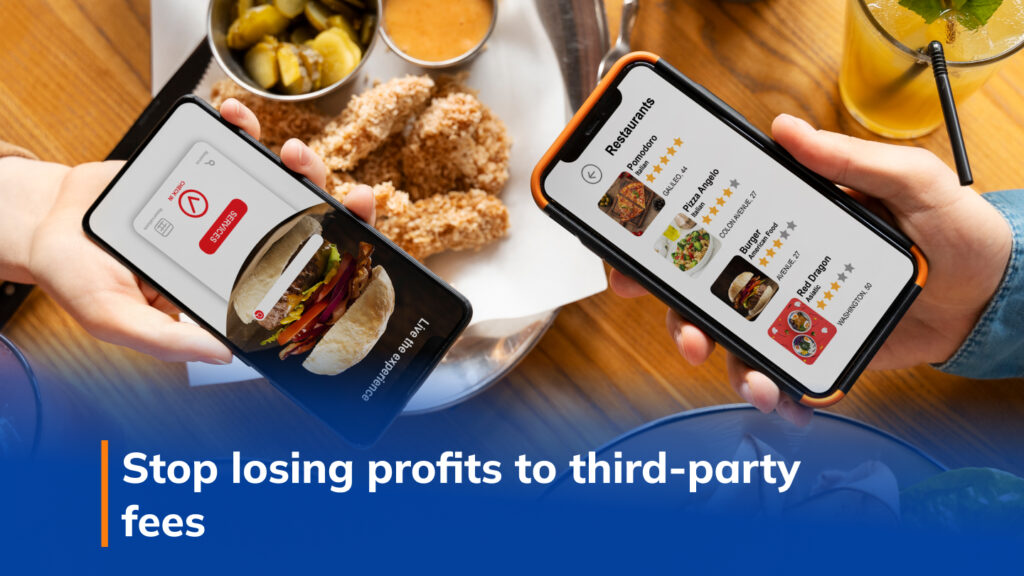
Cost Savings from Avoiding Third‑Party Fees
Third‑party delivery apps commonly charge between 15% to 30% commission per order. That means on a $50 delivery, you might pay up to $12–$15 in fees—before factoring in food and labor costs. For restaurants operating on thin margins, this can significantly erode profitability
By contrast, a custom restaurant mobile ordering app allows you to take orders directly with minimal fees, often just your own payment processor charges or a fixed monthly fee, not variable commission. That direct margin boost can be critical, particularly on higher-volume or mid-size operations.
Increase in Repeat Orders Through Loyalty & Personalization
Customer acquisition is expensive. Retention is where profitability lies. A mobile app is the single most effective tool for fostering customer loyalty.
- Integrated Loyalty Programs: Rather than relying on physical punch cards, an app can host a sophisticated, digital loyalty program. Customers can track points, view their status, and redeem rewards effortlessly. Starbucks is a testament to this model, since the loyalty program now represents 53% of overall spending in Starbucks.
- Personalized Offers: With the data collected through the app, you can move beyond generic promotions. Imagine sending a user a special offer on their favorite coffee blend on the anniversary of their first order, or reminding a customer who hasn’t ordered in 30 days with a “we miss you” discount. This level of personalization makes customers feel seen and valued, dramatically increasing the likelihood of a repeat purchase.
Unlocking Operational Efficiency via Order Automation
Technology can help you with labor shortages, optimizing every minute of your staff’s time is crucial. A restaurant mobile ordering app is a powerful engine for operational efficiency.
- Reduced Order Errors: Mobile orders are transmitted directly from the customer’s phone to your Point of Sale (POS) and Kitchen Display System (KDS). This eliminates the risk of human error from manual order taking over the phone or at the counter, reducing food waste and improving customer satisfaction.
- Streamlined Workflow: When a significant portion of orders comes through the app, it frees up front-of-house staff. They can shift their focus from taking orders and processing payments to expediting orders and enhancing the in-store guest experience. This is particularly vital during peak hours, allowing you to handle higher volumes with the same number of staff.
- Better Labor Management: By analyzing order data from your app, you can predict peak ordering times with greater accuracy. This allows for more intelligent staff scheduling, ensuring you are never overstaffed during lulls or understaffed during a rush.
Gaining Actionable Customer Insights for Smarter Campaigns

Data is the new currency. While third-party apps hold customer data hostage, your own restaurant mobile ordering app turns your business into a data-driven powerhouse.
- Understanding Purchase Behavior: Your app becomes a convenient way of getting first-party data. You can track everything: What are your most popular menu items? What time of day do specific customer segments order? What is the average order value for an app user versus a walk-in?
- Informed Menu Engineering: By analyzing which items are frequently ordered together or which add-ons are most popular, you can optimize your menu for profitability. You might discover an opportunity to create new combos or strategically price items to increase the average check size.
- Measuring Marketing ROI: When you run a promotion through your app. For example, a push notification for a new seasonal item you can directly track its performance. You can see open rates, click-through rates, and, most importantly, how many orders the campaign generated. This provides a clear ROI that is impossible to measure with traditional marketing channels.
Improve the Customer Experience: Speed, Convenience, & Customization
The modern customer prioritizes a frictionless experience. A well-designed restaurant mobile ordering app delivers exactly that.
- Order-Ahead & Skip the Line: The ability to order and pay in advance is arguably the most valued feature of any restaurant app. It empowers customers to skip the queue, grab their order, and go, transforming a potential wait into a seamless transaction.
- Easy Customization & Reordering: Apps make it simple for customers to customize their orders to their exact specifications and save their favorite combinations. A “reorder” button that replicates a previous purchase in two taps is a powerful tool for encouraging habitual ordering.
- Contactless & Cashless Payments: Integrating digital wallets like Apple Pay and Google Pay, or simply saving a credit card, provides a secure and hygienic payment method that modern consumers now expect as standard.
Key Considerations Before Building Your Restaurant Mobile Ordering App
| Decision Point | Key Questions to Ask |
| Pre-built vs. Custom-built | – Pre-built solution that is rebranded for your business. It’s faster to market but offers limited customization. – A custom-built app is designed from the ground up to fit your specific operational workflows, brand identity, and long-term strategic goals. Which aligns with our five-year plan? |
| In-house vs. Outsourcing | – Do we have the internal talent (UI/UX designers, mobile developers for iOS & Android, backend engineers, QA testers, project managers) to build and maintain a world-class app? – Or would partnering with a specialized firm that has proven F&B experience be more efficient and yield a better result? |
| Critical Integrations | – How will the app communicate with our existing systems? – It must have seamless, real-time integration with our POS, KDS, inventory management, and CRM platforms. A failure here will create operational chaos. |
| Scalability & Maintenance | – Will the app’s architecture support our growth from 10 locations to 100? – Who will handle bug fixes, security updates, and OS compatibility updates after launch? – A mobile app is a living product, not a one-time project. |
| Data Security & Privacy | – How will we protect our customers’ personal and payment information? – Do the business owners have ultimate control over the data? |
Domino’s Success Story – a Technology Company Selling Pizza
Domino’s has emerged as a standout example of a restaurant mobile ordering app success strategy. In H1 2023, Domino’s reported a 46% surge in active app users compared to H1 2022. Reaching approximately 7.9 million active customers using the Domino’s app, now accounting for over 75% of all online orders at the brand.
Domino’s isn’t just delivering pizzas, it’s delivering digital innovation. Domino’s has redefined what a restaurant mobile ordering app can do:
- Omnichannel Digital Ordering: Customers can place orders not just via the app, but also through the website, SMS, smartwatches, or even voice assistants. The consistent digital interface eliminates the need for third-party aggregators like Uber Eats, giving Domino’s full control over customer data and experience.
- GPS Delivery Tracking: Domino’s rolled out real-time GPS tracking so customers can follow their pizza from oven to doorstep. This system even allows deliveries to public spaces without traditional addresses like parks or beaches through location-aware Domino’s Hotspots.
- Predictive Ordering with AI: Through its Project 3TEN initiative, Domino’s aims to have orders ready within 3 minutes or delivered in 10. Using machine learning, the app predicts likely orders in real time, allowing stores to prep food before the order is even placed. One store in Australia used this tech to break a delivery-speed record: under 6 minutes for an entire week.
- Location-Driven Expansion: Domino’s doesn’t chase foot traffic. Instead, it selects “hyper-local” store locations based on delivery optimization each within a 9-minute radius of its target area. Its app connects with backend analytics to route orders to the best-performing store for fast fulfillment.
Why SupremeTech Is the Right Partner to Build Your Restaurant App
When it comes to building a restaurant mobile ordering app that’s tailored to your unique brand, operations, and growth goals, having the right technology partner makes all the difference. At SupremeTech, we don’t just develop apps, we build reliable, scalable, and customer-centered solutions that align with your business strategy.
Our experiences building Restaurant Mobile Ordering App
One of our standout successes is a long-term partnership with a leading Japanese restaurant chain that operates across Japan, Taiwan, Malaysia, and the United States. This client provides an online ordering service that lets customers pre-order meals and pick them up at physical locations, an ideal model for today’s convenience-driven market.
Real Results from Real Challenges
- Reduced customer waiting time by 90% at physical stores
- Cut staff workload by 80% through better customer database management
- Improved system stability to let the client focus on business strategy
Our Role
We partnered with our strategic partner Classmethod, where Classmethod handled planning and UI, and SupremeTech managed all technical development.
Our work included:
- Ordering app maintenance and feature upgrades, like authentication and automated deployment
- In-app loyalty integration, with point history and barcode generation
- Middleware for point systems, connecting with Japan’s top loyalty programs (T-Point, D-Point, R-Point)
- E-commerce platform, with take-out and mail-order functionality
With a 27-person team across 3 Agile squads, we handled everything from design to maintenance/ operation proving that SupremeTech is ready to build your restaurant app the way you want it.
📩 Read more articles about us here: https://www.supremetech.vn/blog/
☎️Contact us to see how we can support your loyalty app strategy.


